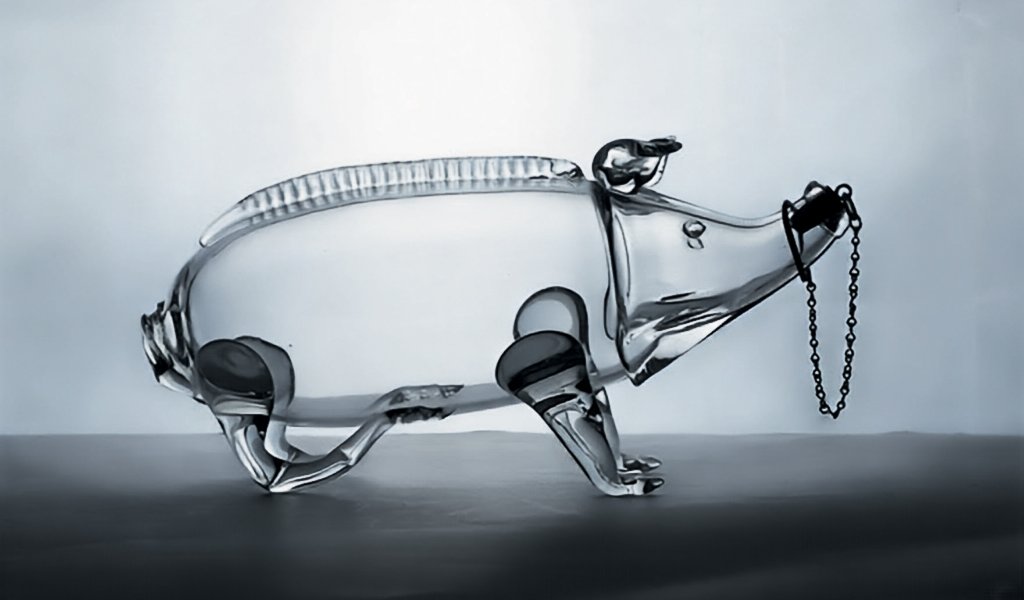THE concept of making decanters in the shape of animals is not a new one. As well as having the cuteness factor, the early 20th Century glass decanter we have pictured also has Scandinavian origins, which makes it even more popular in today’s auction market. It sold for £200 in a recent specialist auction.
Glass production in Karhula, Finland, started in 1888. Much of the glassware produced in the factory was exported to Saint Petersburg. In the 1930s, the factory produced Alvar Aalto’s designer glassware, including the Aalto vases. When the sale of beer became freer in the 1960s, bottles became the factory’s primary type of glassware. The American company Owens-Illinois acquired the factory in 1995 and it was closed in 2009.
Some readers may recall my March 2020 article about a tatty chair found in an attic in Hathersage that was designed by Alvar Aalto, and made £2,200 at auction. It is the same man who also designed glassware. The Aalto Vase designed in 1936 won the first prize in the Karhula-Iittala Glass Design Competition, organised by the Finnish company littala – and the vase has been in production since then.
The Aalto Vase – also known as the Savoy Vase – is a piece of glassware created by Alvar and his wife Aino that has become an iconic piece of Finnish design worldwide. It became known as the Savoy Vase because it was one of a range of custom furnishings and fixtures created for the luxury Savoy restaurant in Helsinki that opened in 1937.
The design was inspired by the costume of Sami woman, called Eskimåkvinnans skinnbyxa (an Eskimo woman’s leather breeches). The design consisted of a series of crayon drawings on cardboard and Aalto created initial prototypes by blowing glass in the middle of a composition of wooden sticks stuck into the ground, letting the molten glass swell on only some sides, creating a wavy outline.
The initial manufacture of the vase was not without problems and the idea of using moulds made of thin steel sheets forced together to form closed sinuous shapes had to be abandoned. The vase was originally manufactured by the glassworks factory using a wood mould which was slowly burned away.
The original height of the Savoy vase was 14centimetres (5.5in). Larger examples sell for more at auction. Aalto never made money with the vase, because the design belonged to the factory. The vase has been manufactured in a full spectrum of colours. The simplicity of the vase continues to be popular in the 21st century. In recent times the vase has achieved iconic status, inspiring adaptations by contemporary designers including Jan Ctvrtnik and Tobi Wong.
Sticking to the Scandinavian theme, Stavangerflint pottery was an earthenware factory that was in operation between 1949-79 in Stavanger, Norway. It is worth mentioning that pieces produced by them are often hand painted with vibrant spontaneous brush marks, adding to their appeal in the current market.
Production of tableware for households and for the professional market started in 1949 under the name of Stavanger Fajansefabrikk. The originators, Trygve Brekke (1908–1994) and Trygve Pedersen (1887-1969) took as their starting point the market conditions and needs resulting from inter-war imports of ceramic tableware, the war and post-war shortage of goods, and expectations for a growing domestic demand as the country gradually recovered from World War Two, and as retail purchasing power grew.
Stavanger Fajansefabrikk aimed from the start for a clay mixture and manufacturing process which was to be marketed as Stavangerflint, based on a recipe developed by Josiah Wedgwood in England around 1750. This was a marketable name which had the aim of presenting the factory’s products as strong and durable earthenware.
In 1968 Stavangerflint merged with its competitor Figgjo Fajanse. Stavangerflint continued as a branch of Figgjo Fajanse-Stavangerflint. In 1979, the properties in Stavanger were sold. All production was transferred to Figgjo and the business changed its name to Figgjo.
Signed works by women artists Turi Gramstad Oliver, Kari Nyquist, Gro Pedersen Claussen, Anne Lofthus and Inger Waage, whose designs have a fun element, have created great interest among collectors, internationally. Because the products were exported, there are collectables found all around the world.
Editor’s Note: Perhaps you also have jewellery, antiques and collectables that might be valuable? If so, it is worth getting the advice of an Independent Antiques Valuer to assess them. For further information, please contact Vivienne on 01629 640210 or 07870 238788. Alternatively, go to www.viviennemilburn.co.uk or email vivienne@viviennemilburn.co.uk






